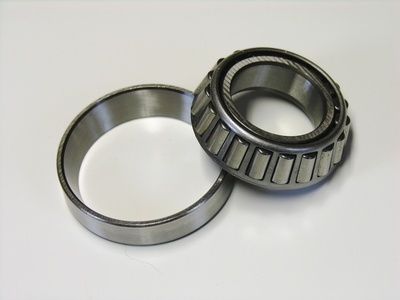
There are two common types of automotive wheel bearings used. Wheel hub bearing assemblies are becoming more and more popular, even on wheels with no drive axle. Wheel hub bearing assemblies come assembled with the bearings inside and are nonserviceable. The other older style of bearings are separate components from the wheel hub. The inner bearing and racer have to manually be pressed into the rear of the brake rotor or brake drum assembly and the front bearing is free-floating. These should be serviced (repacked with grease) every time a brake job is performed.
Test drive the vehicle to determine which axle (front or rear) the bearing noise (if applicable) is coming from. Faulty bearings can emit growling, whining, grinding, squealing or squeaking noises that intensify with the revolution of the tires.
Park the vehicle on level ground so you can safely lift the vehicle. Apply the parking brake if lifting the front of the vehicle. Do not apply the parking brake if lifting the rear axle or the parking brake will prohibit moving the wheels.
Place a wheel chock against the outside tread of the opposite axle from the one being lifted.
Hoist the respective axle up (one side at a time) with the jack and support each side with a jack stand placed in a safe position under the vehicle.
Place one hand on top of the tire and another hand at the bottom of the tire and try to wiggle the tire by pulling out on the top and pushing in on the bottom and then the other way around. Free-floating bearings (such as the front bearings on rear-wheel drive vehicles) allow a slight bit of play. However, hub bearing assemblies do not allow any play. If there is slight play, check to see if there is a drive shaft going through the wheel assembly. If there is not, there's a good chance it's a floating bearing style, but refer to the vehicle owner's manual to confirm. If there is a drive shaft going to the wheel, the hub bearing assembly is bad and needs to be replaced. Check both wheels of the axle in this fashion.
Rotate the tire if there is no play to determine if there is a noise (more on one side than the other) or slight resistance can be felt while the tire is rotating. Some vehicles may require having the transmission placed in the neutral position for this test. If there is any resistance or noise heard, the bearings should be inspected professionally and serviced or replaced. Floating bearings sometimes can be serviced and tightened, but hub bearing assemblies will require replacement.